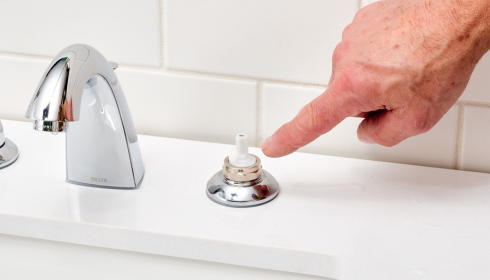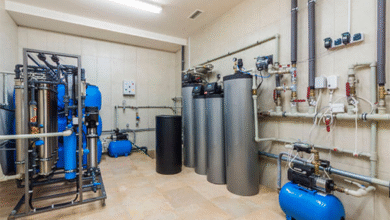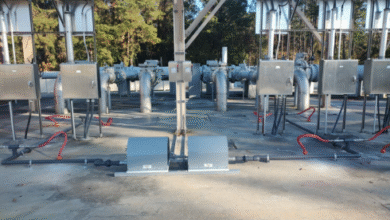When a Drip Becomes a Headache: Understanding Faucet Leaks and How to Handle Them

There’s something oddly irritating about a dripping faucet. At first, it seems harmless—a little “plink, plink” echoing in the sink. But leave it for a few days and suddenly that tiny leak feels like a ticking clock, keeping you awake at night and reminding you of the water (and money) being wasted. Leaky faucets are one of those household problems that seem small until they’re not, and tackling them often means balancing DIY attempts with knowing when it’s time to call a professional.
Why Faucets Leak in the First Place
Faucets, like any household fixture, take a beating. Think about it: they’re twisted, turned, lifted, and pushed dozens of times every single day. Over time, the internal parts—washers, O-rings, cartridges—wear down. Water pressure shifts, seals loosen, minerals build up, and before you know it, there’s a drip you can’t ignore.
A leaky faucet isn’t just annoying. It’s wasteful. The EPA estimates that household leaks can waste nearly 10,000 gallons of water each year. That’s money down the drain, quite literally. So the sooner you handle it, the better.
Bathroom Leaks: More Than Just an Inconvenience
One of the most common spots for leaks is the bathroom sink. And while it may look like a minor nuisance, a constant drip can stain your sink, encourage mold growth, and even damage cabinetry over time. Homeowners often search for bathroom faucet leak repair solutions when that slow drip starts turning into an expensive water bill.
Sometimes, replacing a simple washer can do the trick. Other times, the issue lies deeper—like a corroded valve seat or a faulty cartridge. Knowing the difference isn’t always obvious, which is why many people start out with YouTube tutorials, only to end up calling a plumber anyway.
The Kitchen: Where Leaks Cause the Most Trouble
If bathroom drips are irritating, kitchen leaks can be downright disruptive. Kitchens are where we wash veggies, clean dishes, fill pots, and—let’s be honest—spend a good chunk of our time. A leaky kitchen faucet doesn’t just waste water; it interferes with daily life.
When people type “kitchen faucet repair near me” into Google, it’s usually because they’ve tried tightening things themselves but the leak keeps coming back. Kitchen faucets are often more complex, with pull-down sprayers, multi-setting nozzles, and connections that are trickier than a standard bathroom sink. That complexity makes them harder for the average DIY enthusiast to fix.
The Money Question: What Does It Really Cost?
Let’s be real—most homeowners don’t just want the leak fixed; they want to know what it’s going to cost. The good news is that small fixes like washer replacements are inexpensive. The not-so-good news is that larger repairs or replacements can add up, especially if parts are specialized or outdated.
The faucet leak repair cost can vary widely depending on whether it’s a quick adjustment or a full replacement of internal components. On average, you might spend anywhere from $75 to $200 for professional help, but unusual models or hard-to-reach plumbing can push that higher. That’s why some homeowners decide to replace the faucet altogether, especially if it’s older and showing signs of wear in multiple areas.
DIY vs. Professional Help
Here’s the big debate: should you grab a wrench and fix it yourself, or just call in a pro from the start?
DIY repairs are appealing because they seem simple and cheap. With the right tools, many leaks can be solved in under an hour. The trouble is, what looks simple on a video may not be simple in your house. Faucets come in different designs—compression, ball, cartridge, ceramic disk—and each requires a slightly different fix. Miss one step, tighten one screw too much, and suddenly you’ve got a bigger problem than you started with.
Plumbers, on the other hand, know these systems inside out. They’ll identify the problem quickly, have the replacement parts ready, and make sure the job is done right the first time. Paying for expertise often saves both time and frustration.
The Hidden Costs of Ignoring a Leak
It’s tempting to ignore a small drip, but here’s the thing: leaks rarely fix themselves. In fact, they usually get worse. That means higher water bills, potential mold growth, damage to countertops and cabinets, and in extreme cases, structural damage if water seeps where it shouldn’t.
Plus, the sound of a dripping faucet has a way of burrowing into your brain. You’ll lie awake at night, swearing the drip has gotten louder, and wonder why you didn’t just fix it weeks ago.
Choosing the Right Faucet Replacement
Sometimes, the smartest move isn’t repairing at all—it’s replacing. If your faucet is over a decade old, corroded, or outdated, putting money into fixing it may not be worth it. New faucets are designed to be more water-efficient and come with features that make everyday tasks easier.
When shopping, look for fixtures with a WaterSense label, which guarantees better water efficiency. And don’t underestimate aesthetics—upgrading to a sleek new faucet can transform the look of a bathroom or kitchen without requiring a full remodel.
How to Find the Right Help
If you’re going to bring in professional help, don’t just call the first number you find. Look for licensed plumbers in your area, check reviews, and ask for quotes. Many plumbing companies now list their services and even ballpark pricing online, making it easier to compare.
For ongoing peace of mind, some homeowners even schedule annual plumbing inspections to catch small issues before they become big ones. It’s not a bad idea, especially in older homes where pipes and fixtures are already under stress.
Wrapping It Up
At the end of the day, a leaky faucet is one of those small household problems that can spiral into something bigger if ignored. Whether it’s a drip in the bathroom sink or a leak that makes washing dishes a chore, the key is to act quickly—either with a DIY fix if you’re confident, or by calling in a professional if you’re not.
And here’s the upside: once the leak is fixed, that quiet silence where the drip used to be feels incredibly satisfying. No wasted water, no rising bills, and no nagging reminder that something’s broken. Just a working faucet, doing exactly what it’s supposed to.




